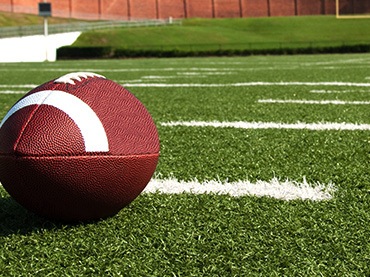- Sections :
- Crime & Public Safety
- Restaurants & Food
- Sports
- More
Six things student athletes should know before taking the field

THE WOODLANDS, Texas – With the fall sports season gearing up, physicians with Memorial Hermann want to help keep young athletes healthy and safe both on and off the field. Young athletes (and parents too) should consider these tips – provided by Alfred Mansour, M.D., pediatric orthopedic and sports medicine surgeon affiliated with Children’s Memorial Hermann Hospital and Summer Ott, Psy.D., Director of the Sports Concussion Program at Memorial Hermann IRONMAN Sports Medicine Institute – to ensure they are fit for play:
Sports Physical Exams are a must
All athletes should have a physical exam and if indicated a heart exam before preseason training begins. A physical exam can detect a heart murmur while an electrocardiogram (ECG) can identify underlying cardiac conditions that can cause serious and sometimes fatal complications during strenuous activity. This is especially important in the Texas heat, which adds to the physical toll of a workout. A normal physical exam will help to identify any lingering injuries or problem areas that could jeopardize an athlete’s health.
Students should be in shape before strenuous practice begins
It is essential that athletes are already training and in shape before the strenuous practice begins. Athletes who go into practices unprepared will put unnecessary and even dangerous strain on their bodies. If the student athlete has not maintained regular physical activity during the summer or especially in the weeks leading up to practice, it is important to inform the coach and encourage the athlete to ease slowly into the activity.
Warm-ups and cool-downs go a long way in preventing injury
There are several ways athletes can prevent injury as they get into peak physical condition. Jogging or dynamic stretching before a workout decreases the likelihood of muscle and joint injuries. Start every workout with a warm-up that emphasizes the muscle groups that will be used most in the workout. An appropriate cool-down helps the body recover faster from workouts and also decreases the chance of future injury. The best way to do this is through a slow jog or similar aerobic activity. The workout should end with static stretches to loosen up muscles that were used in the workout.
Hydration is key
The importance of hydration during exercise cannot be stressed enough. Athletes who are going into their workouts unprepared for the heat and level of intensity will especially need to pay attention to symptoms of dehydration and heat exhaustion. Athletes appearing exceptionally sluggish, disoriented, or confused could likely be suffering from heat exhaustion and should be cooled down immediately and given water. If these symptoms persist or are not handled appropriately, the athlete’s condition may worsen and lead to severe dehydration or heat stroke. Coaches, athletic trainers and students should have an emergency plan in place to deal with heat illness. If an athlete loses consciousness or faints, move him or her to a cooler area and call 911 immediately. Sports drinks can be used during long, high intensity workouts, but should not be a substitute for water.
Nutrition can make or break performance
Nutrition can make or break an athlete’s performance well before a practice begins. Supplements are not a viable substitution for healthy eating habits. When it comes to carbohydrates, athletes should be eating whole grains such as brown rice, oatmeal, and whole wheat bread. Lean protein should also be consumed at each meal. Good examples of lean proteins are egg whites, Greek yogurt, peanuts, fish, and chicken. Fresh fruits and vegetables contain nutrients that are vital for injury prevention and recovery. The key is to balance all of these foods and maintain healthy habits off of the field. Use your head
According to the American Journal of Sports Medicine, the rate of concussions in U.S. high school athletes more than doubled between 2005 and 2012. Typically caused by bump, blow or jolt to the head or body, concussions can cause brain bleeds, traumatic brain injury or seizures and can affect future brain function and cognition. Players – especially those playing high-impact sports – need to be very cautious and take precautions to protect their heads, including a pre-season baseline concussion exam conducted by a specialist with extensive training in the diagnosis and management of concussion. If a concussion occurs, it is important that the athlete undergo a post injury evaluation as soon as possible, which can be compared to their pre injury baseline to determine any effects following the injury. Under Texas state law, any school-age athlete who exhibits signs and symptoms of concussion must be removed from play immediately and is not allowed to participate in games or practices until the athlete has been evaluated and given clearance by a physician. A list of concussion specialists and the return-to-play guidelines can be found on the Concussion Program page at ironman.memorialhermann.org.




















